Color Blocking Techniques and Ideas for Interior Walls

One of the best ways to use paint to add depth, intrigue, and color to your house is color blocking walls.
Color blocking, as opposed to wallpaper, allows you to customize the layout of your room to your exact specifications.
Even the most inexperienced do-it-yourselfers may easily accomplish all of these projects with the use of some basic masking tape, a ruler, and a pencil.
In order to inspire you, we've gathered the greatest tips and tricks, which help you achieve your desired result of color blocking walls.
What is Color Blocking the Walls?
Bold, contrasting colors are used in color blocking design to produce an eye-catching impression. Color blocking, when used on walls, can give any space a dash of individuality and flair.
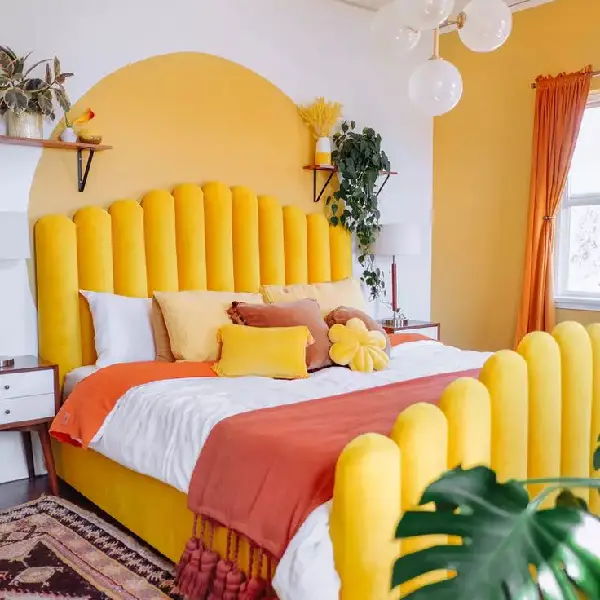
image sourced from here
You may use color blocking in your wall design in a variety of ways. Making a straightforward geometric design, like squares or stripes, is a common choice.
What is Color Blocking in Interior Design?
In interior design, color blocking is the technique of using parts of a single hue or contrasting blocks to produce a visually arresting and strong impact.
It entails employing several hues in sizable, substantial portions to instill harmony and equilibrium in an area.
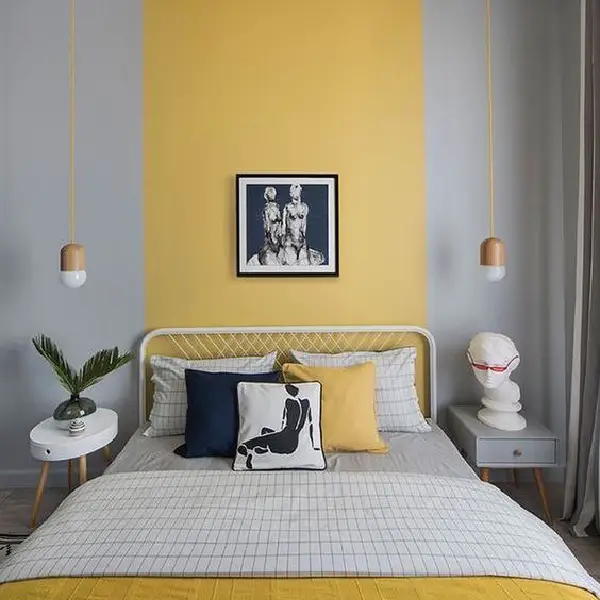
image sourced from here
Additionally, color blocking may be used to produce intricate designs like a landscape or mural.
Preparation of the Surface
"Wall preparation before color blocking" describes the essential actions completed before using color-blocking techniques on a wall.
However, careful wall preparation is necessary to obtain a faultless and durable color blocking effect.
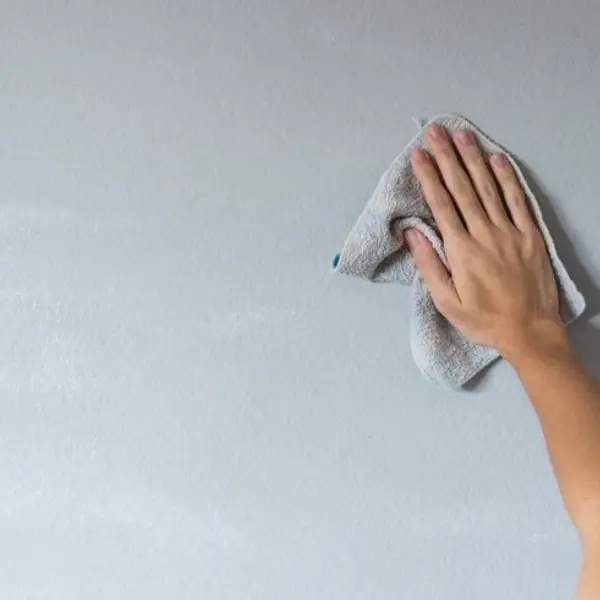
image sourced from here
Here's a thorough breakdown of the setup procedure:
- Surface Inspection: Start by carefully examining the wall to look for any flaws, including holes, cracks, or uneven surfaces. Sand down any rough spots, fill up cracks with spackling compound and make sure the wall is level and smooth to address these problems.
- Cleaning: Scrub the wall to get rid of any debris, oil, or dust that might prevent the paint from sticking. Wipe the wall clean with a sponge or towel with a light detergent and water or a sugar soap solution. Let the wall air dry thoroughly before moving forward.
- Priming: Before beginning any color blocking project, the wall must be primed. Primer improves paint adherence, evens up surfaces, and offers superior coverage. Select a primer that works well with the paint that you want to use. Using a brush or roller, uniformly apply the primer, and allow it to dry in accordance with the manufacturer's recommendations.
- Sanding: To smooth out any rough areas or brush marks, softly sand the wall with fine-grit sandpaper once the primer has dried. This process guarantees that the color blocking paint will dry smoothly and evenly.
- Taping: To achieve neat and accurate borders in color blocking designs that feature geometric patterns or sharp lines, use painter's tape. Tape should be applied to the wall firmly, making sure it sticks properly to stop paint from leaking through.
If you need more information about preparing the before color blocking wall, click here.
Color Blocking Paint Ideas & Planning
However, you should also pay close attention to color placement and proportion to achieve balance:
The following considerations should be made while planning the color placement for color blocking:
- The overall color scheme: When selecting colors for color blocking, make sure they work well together and result in an eye-catching image. To help you choose complementary colors, you can utilize a color wheel.
- Dimensions and form of the color blocks: The proportions and shapes of the color blocks may affect how the garment looks as a whole. Large color blocks can provide a striking and dramatic impression, but tiny color blocks could offer a more subtle and beautiful design.
- The placement of the color blocks: The placement of the color blocks can also affect the overall look of the garment. Color blocks can be placed horizontally, vertically, or diagonally. You can also create interesting effects by using different shapes for the color blocks.
Are you looking for color block paint ideas? If yes, read this part carefully. Below we have mentioned some of the trendiest color blocking wall ideas with their pictures.
1. Make audacious color selections
The use of color blocking celebrates color. So be brave! It's vital to note that color blocking doesn't always require the use of just two colors, despite the fact that it is generally done with just two colors or patterns.
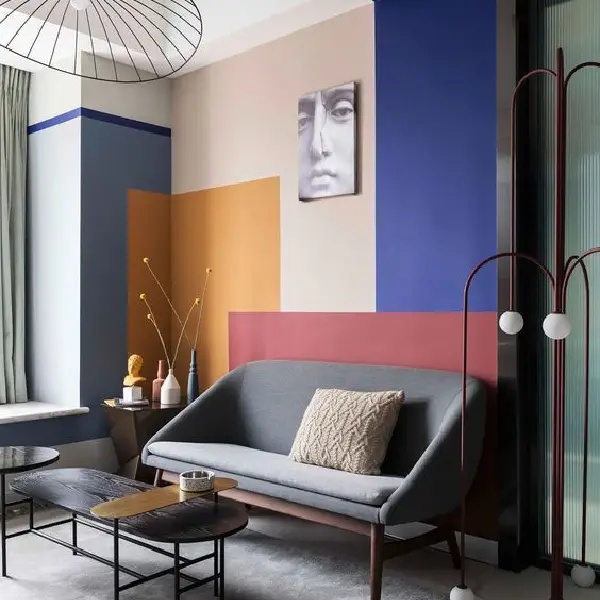
image sourced from here
2. Make the appearance of a divided wall
Paint your wall halfway through to create two separate color blocks. Choose contrasting hues or even a treatment with two tones.
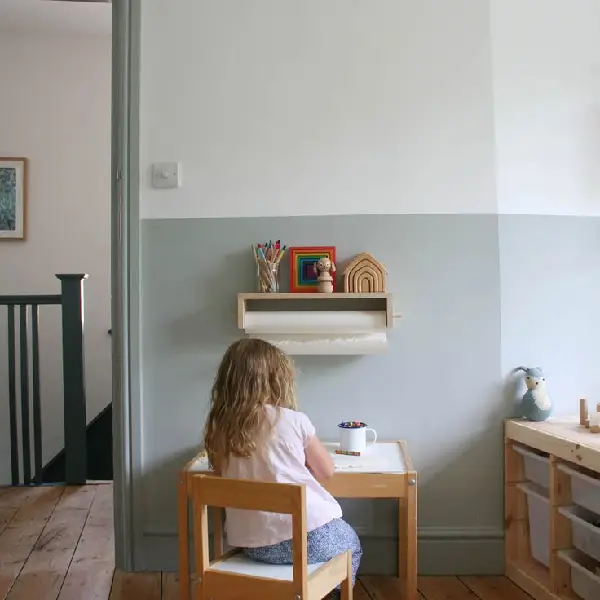
image sourced from here
3. Block paint wall with patterns and prints
Despite the term "color" blocking, this kind of design isn't limited to paint colors. Additionally, you may block using prints and patterns. An excellent method to achieve this is to mix and match your wallpaper.
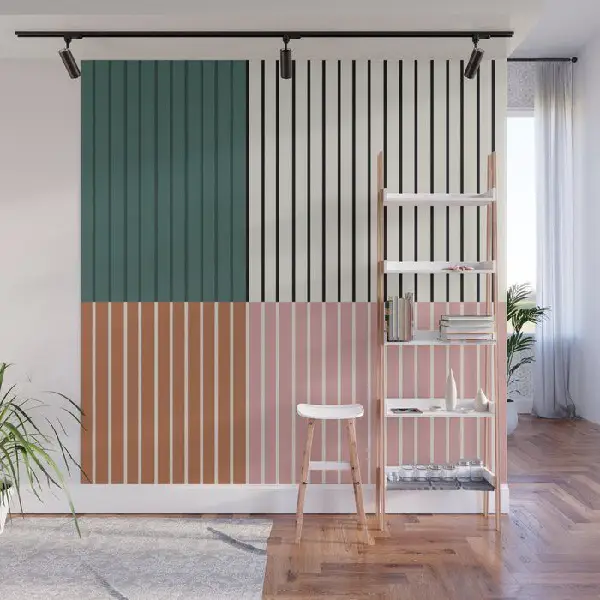
image sourced from here
4. Use paint to create a wall mural
Paint your walls a different color to create a wall mural if you want to give your house a truly wow impact because this is one of the top paint color blocking ideas.

image sourced from here
5. Apply paint on your ceiling
You don't have to stick to only the walls; you may dramatically change the appearance of a space by using paint or wallpaper to color block the ceiling.
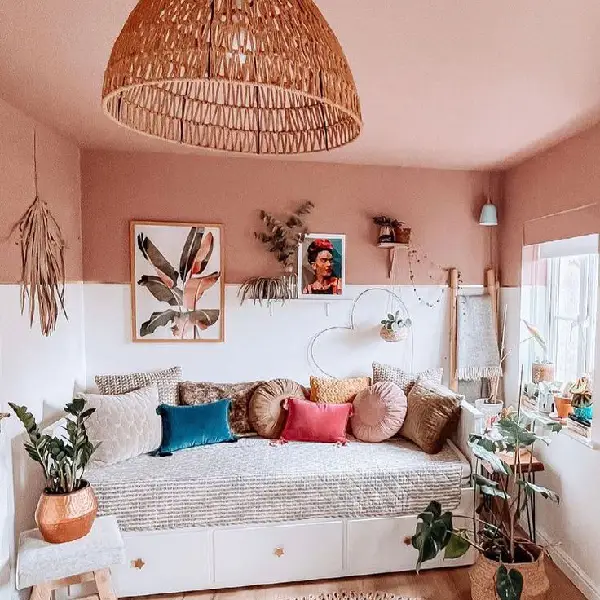
image sourced from here
Taping Techniques
Tape can be applied in several ways for color blocking. Painter's tape is one popular technique.
Low-tack painter's tape is simple to remove without causing damage to the paint. Painter's tape is easy to use; just cover the parts you want to keep unpainted. Paint over the exposed portions after that. When the paint dries, take off the painter's tape to see the crisp, defined lines.
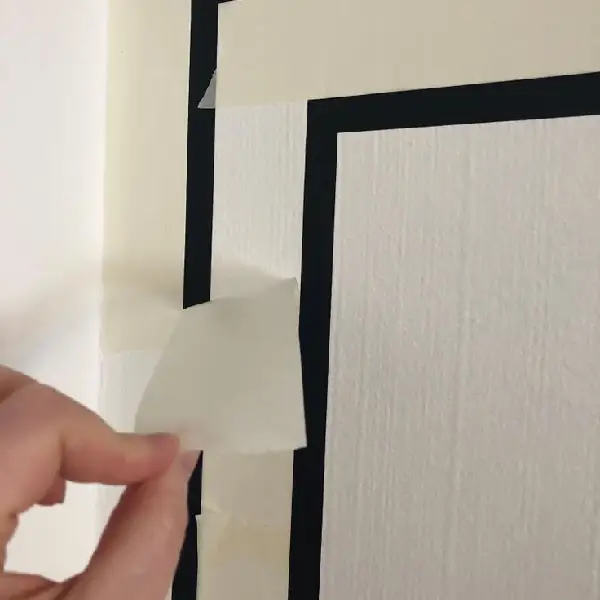
image sourced from here
Masking tape is an additional technique for color blocking taping. A stronger tape that is more challenging to remove is masking tape.
But it may also be used to draw lines that are more accurate. Tape off the parts you wish to keep unpainted with masking tape.
Next, score the tape around the edges of the chosen design using a sharp knife. This will lessen the chance of paint leaking under the tape. After the paint dries, take off the masking tape to see the crisp, defined lines.
Painting Tips and Tricks
This thorough guide will assist you in understanding and choosing the appropriate paints for your color blocking wall project:
- Oil-Based Paints: These paints offer a smooth, uniform finish and are renowned for their longevity and good coverage. They do, however, require enough ventilation during application because of their pungent odor.
- Water-Based Paints: These paints are simple to clean up after, low-odor, and environmentally friendly. Although they provide sufficient coverage, solid colors sometimes need more than one layer.
- Acrylic Paints: Suitable for a variety of surfaces, acrylic paints are quick to dry and offer good coverage. They are simple to clean up and based on water.
Looking for more information about different types of paint? Click here.
Here are some high-quality paints that provide you with full coverage:
- Behr Marquee Advanced Stain-Blocking Paint & Primer
- Glidden Premium Interior Paint + Primer
- HGTV Home by Sherwin-Williams Infinity Advanced Performance Paint & Primer
- Clark + Kensington Premium Interior
- Sherwin-Williams Emerald
If you need more information about high-quality paints, click here.
Another question that may come into your mind is “Which one should we use for color blocking wall; a roller or a brush”. Below we have discussed this topic and answered the question.
You may apply the various colors on a wall using a brush or a roller while color blocking. A brush works better to create exact edges and clear lines, while a roller is fantastic for covering vast surfaces quickly and evenly.
Using a little paintbrush, cut in around your intended color block to produce a tidy edge. Once the cutting is complete, fill the tray with paint and roll the paint onto the wall using the roller. Begin from the summit and proceed downhill.
Transition Zones
The spaces where two or more colors come together and meld together are known as transition zones between color blocks.
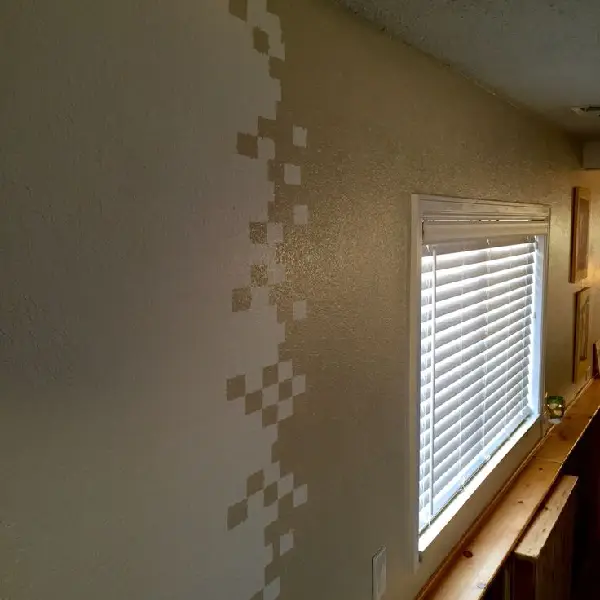
image sourced from here
In order to create smooth and aesthetically beautiful transitions, handling these zones correctly is essential in design, art, and other creative disciplines.
For handling transition zones between color blocks, there are a number of strategies and factors to take into account:
- Gradients: A gradual change in color from one shade to another is referred to as a gradient. They produce a smooth transition, removing sharp color shifts and adding dimension and depth.
- Blending: By subtly blending the nearby colors, one may soften the borders of color blocks. By avoiding sharp edges between hues, this method contributes to a more organic and natural transition between them.
- Feathering: The process of combining colors more gradually and subtly is comparable to blending. It produces a delicate and seamless transition at the margins of color blocks by producing a soft, almost hazy look.
- Dithering: To give the appearance of a seamless color transition, dithering is a method that employs a pattern of tiny dots or pixels of different hues. Gradient color shifts are a prominent technique in digital art and design.
- Color Harmonies: Managing transition zones requires an understanding of color harmonies and their interactions. Colors that are triadic, similar, and complementary can provide visually appealing and well-balanced transitions.
- Texture and Patterns: Transition zones can benefit from the visual interest and depth that textures and patterns provide. A dynamic and well-balanced design may be produced by utilizing patterns that fill up the spaces between colors or by overlapping textures.
Accentuating Architectural Features
Color blocking walls can be applied to create a feeling of rhythm and movement or to draw attention to certain architectural features, including columns, windows, or doors.
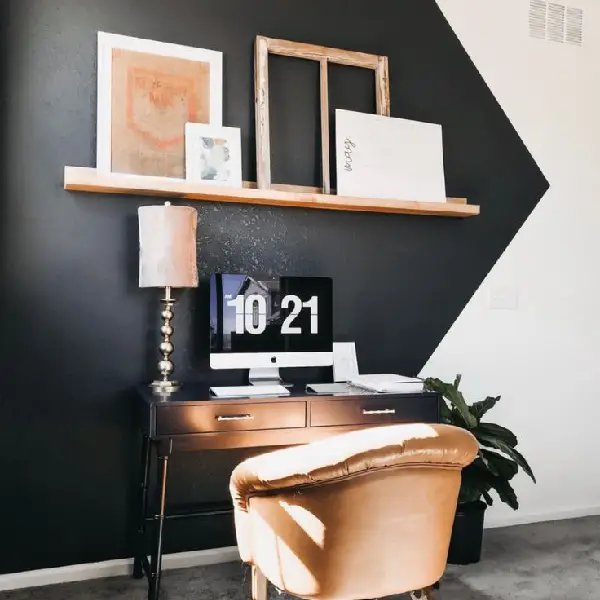
image sourced from here
Additionally, color blocking may be utilized to highlight a feature or attract attention to a specific location inside a building.
Color blocking, when applied skillfully, may be a useful technique for producing an architectural design that is both visually appealing and intriguing.
But it's crucial to utilize color blocking sparingly and pay close attention to the colors you choose.
The following advice will help you use color blocking in architecture effectively:
- To add visual appeal, choose colors that contrast.
- To draw attention to particular architectural features, use color blocking.
- To evoke a feeling of rhythm and movement, use color blocking.
- To highlight a feature or bring attention to a certain region of a structure, use color blocking.
- Use color blocking sparingly.
- Use color blocking to highlight architectural features like alcoves, recesses, or built-in shelves.
- Think carefully about the colors that are chosen.
Conclusion
For you to achieve a successful color blocking implementation, you should keep in mind important takeaways, such as using the right amount of paint and the best brand of paint and using tools such as painters tape or masking tape to have the best results.
So pay close attention to the tips and tricks mentioned in this article about color blocking walls if you want your house to have the best, refreshing look.
- In this post:
- What is Color Blocking the Walls?
- What is Color Blocking in Interior Design?
- Preparation of the Surface
- Color Blocking Paint Ideas & Planning
- Taping Techniques
- Painting Tips and Tricks
- Transition Zones
- Accentuating Architectural Features
- Conclusion



